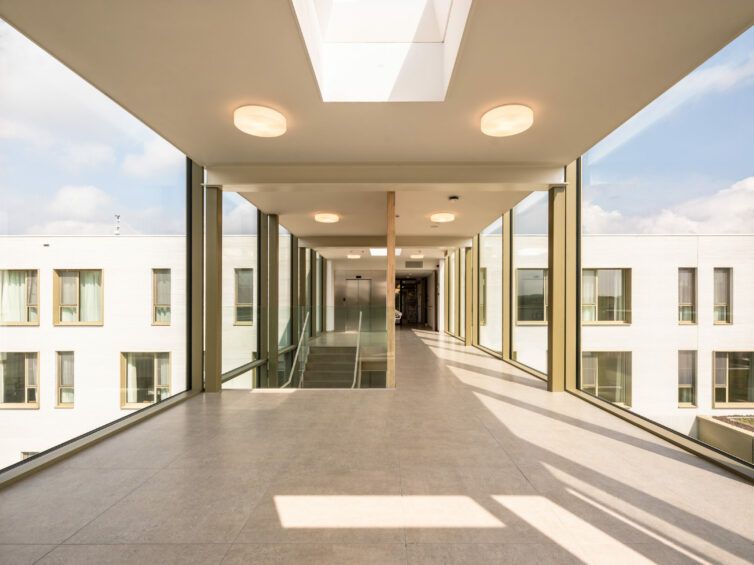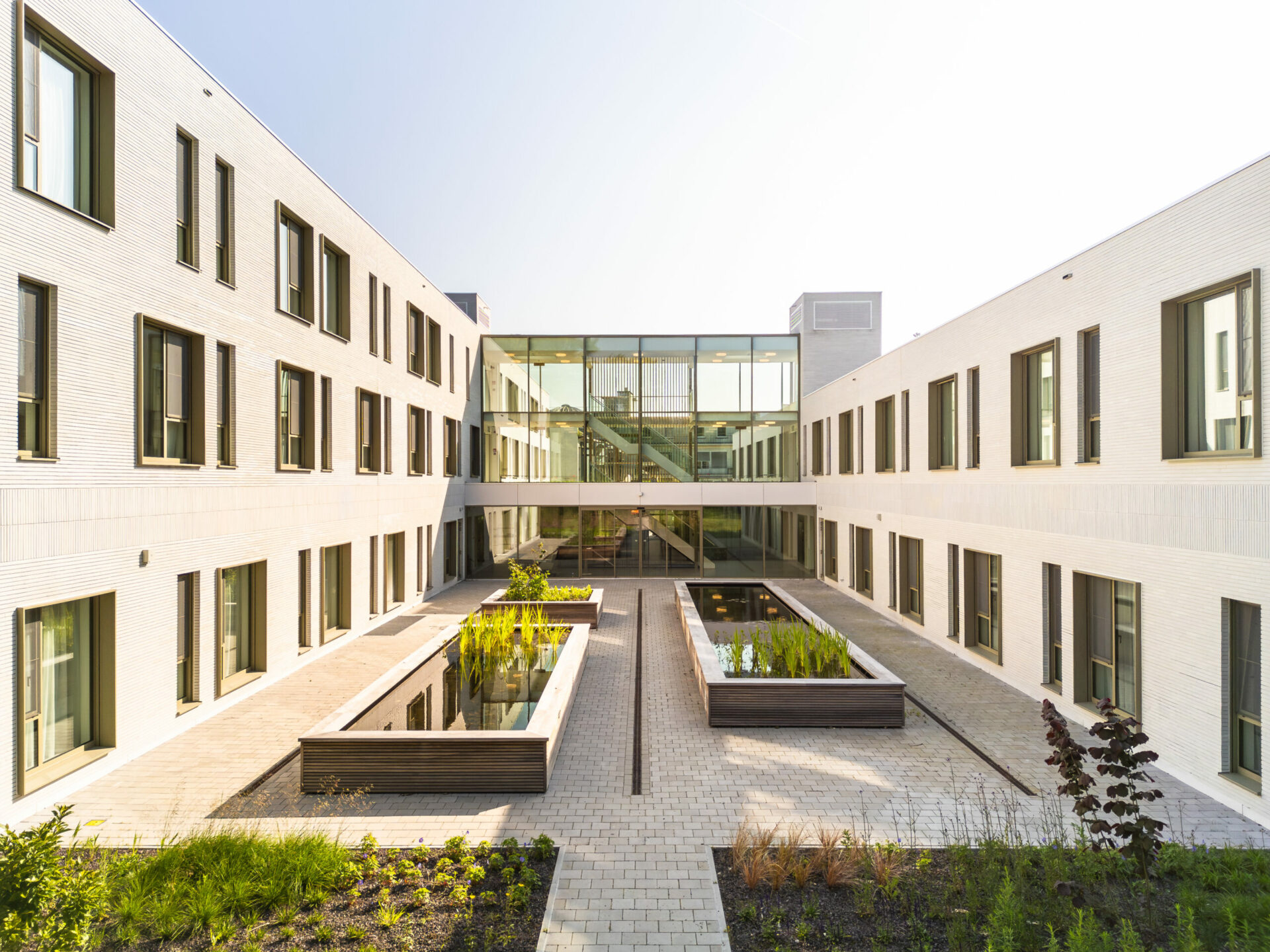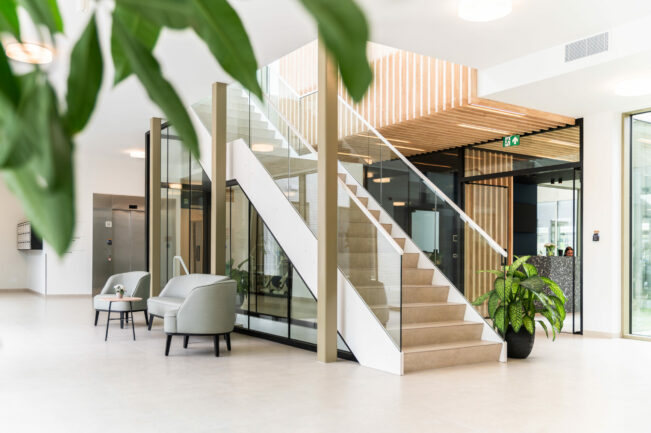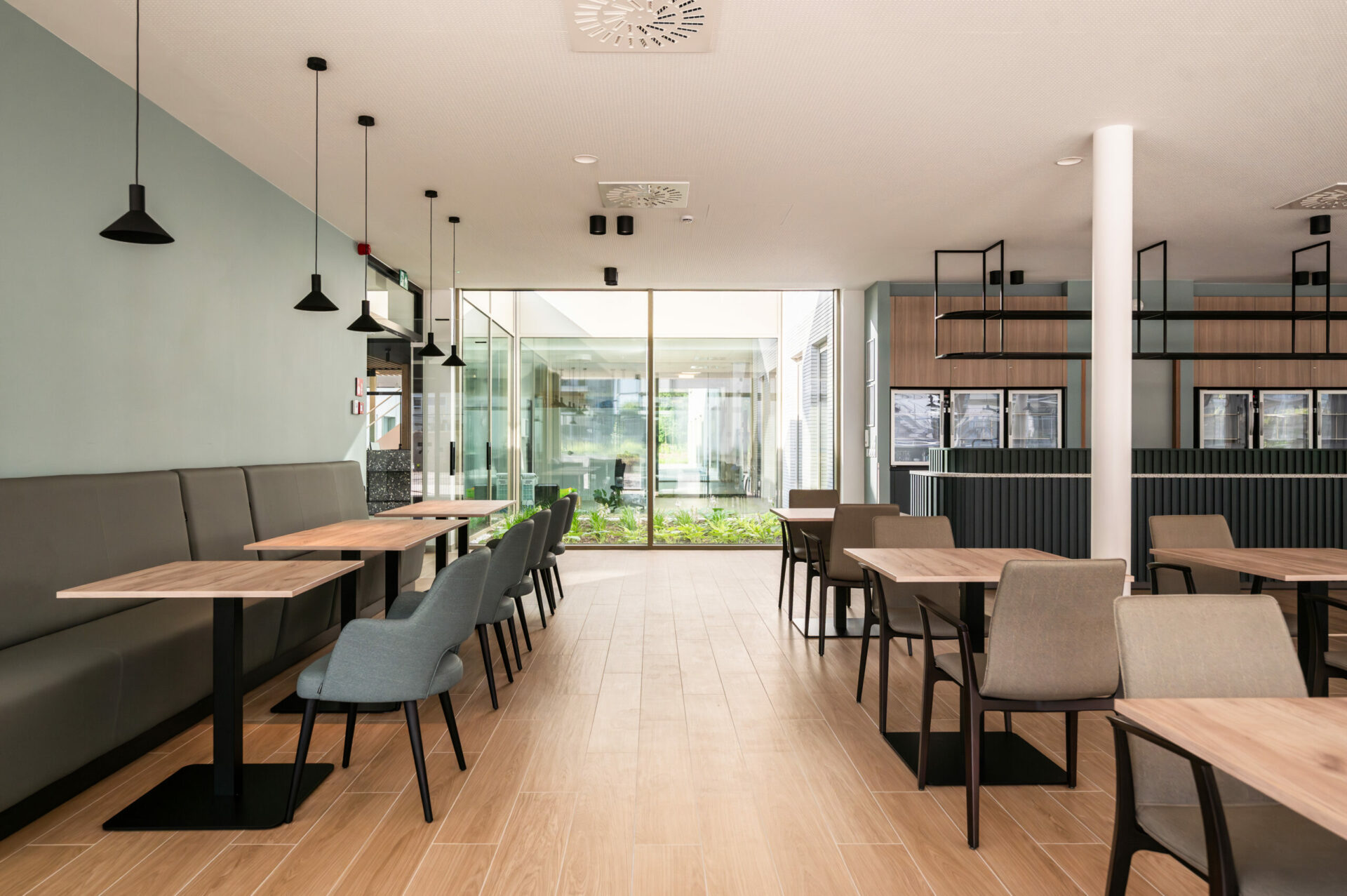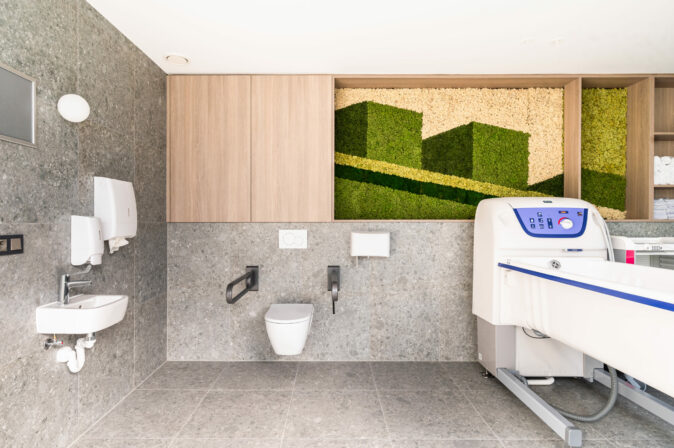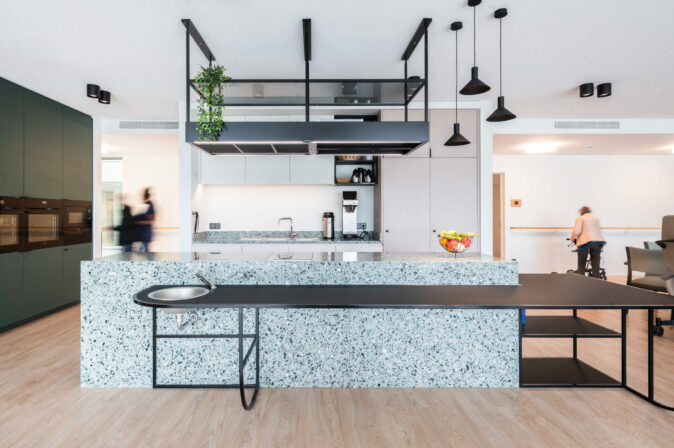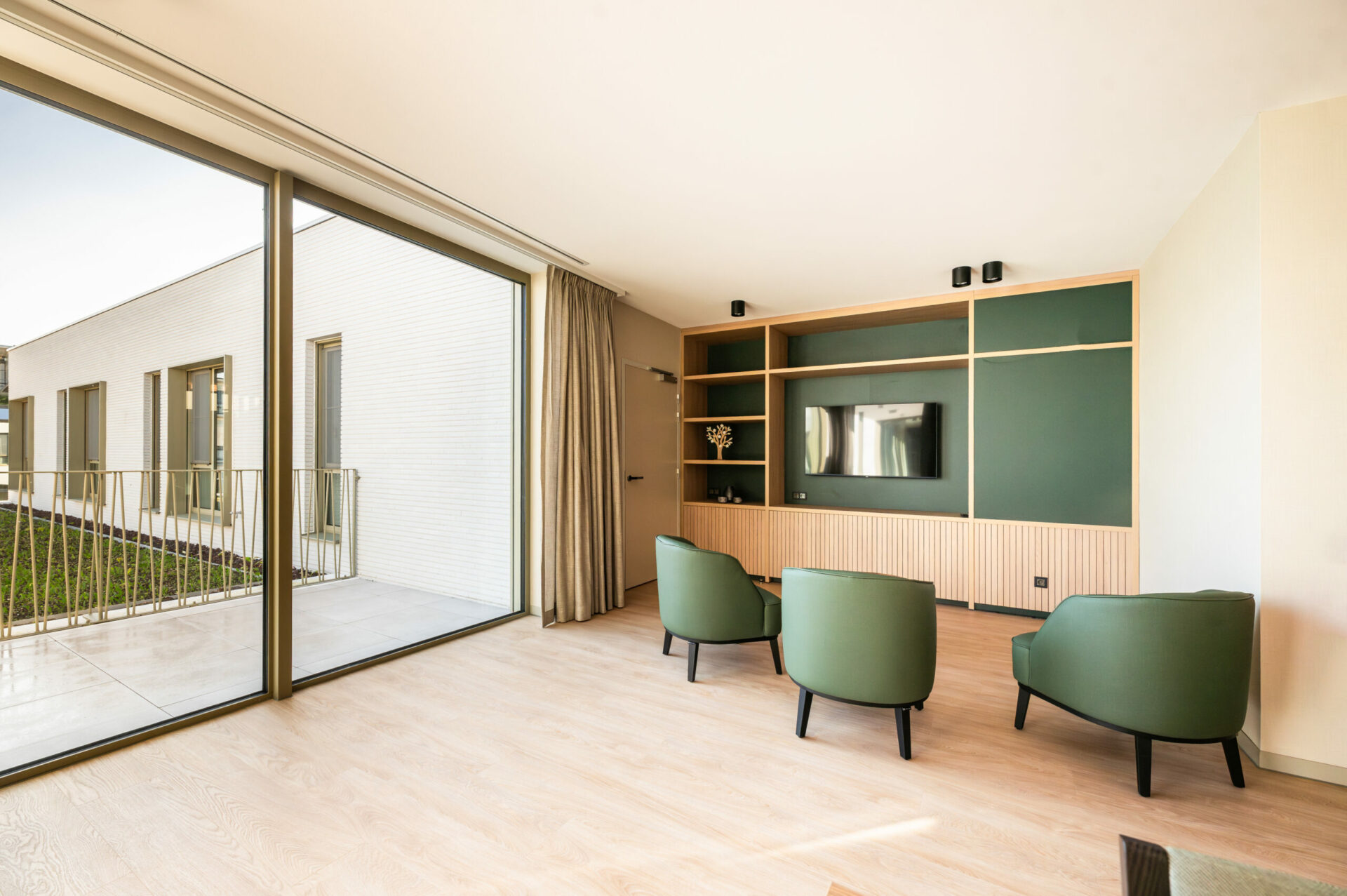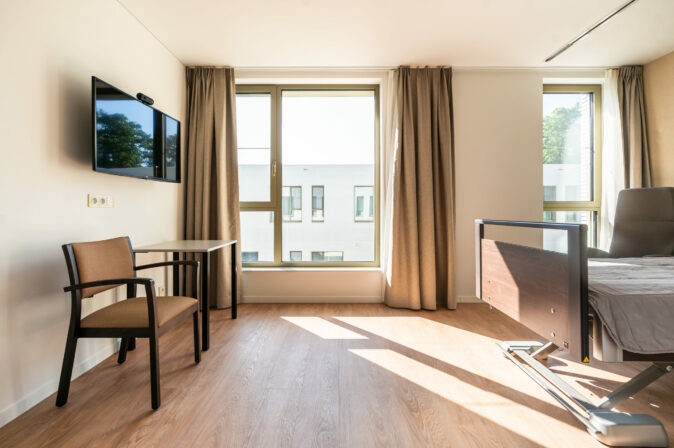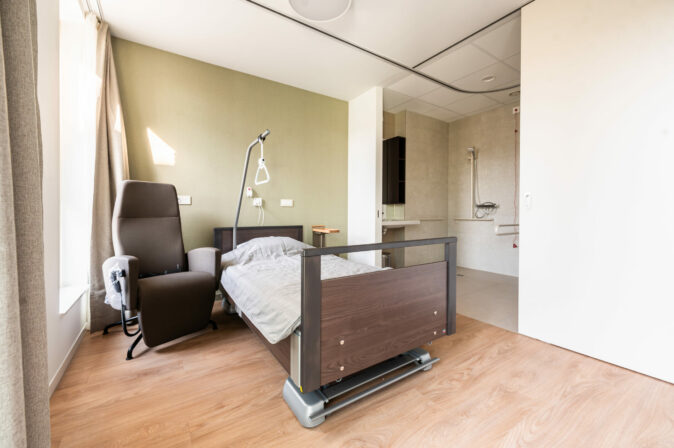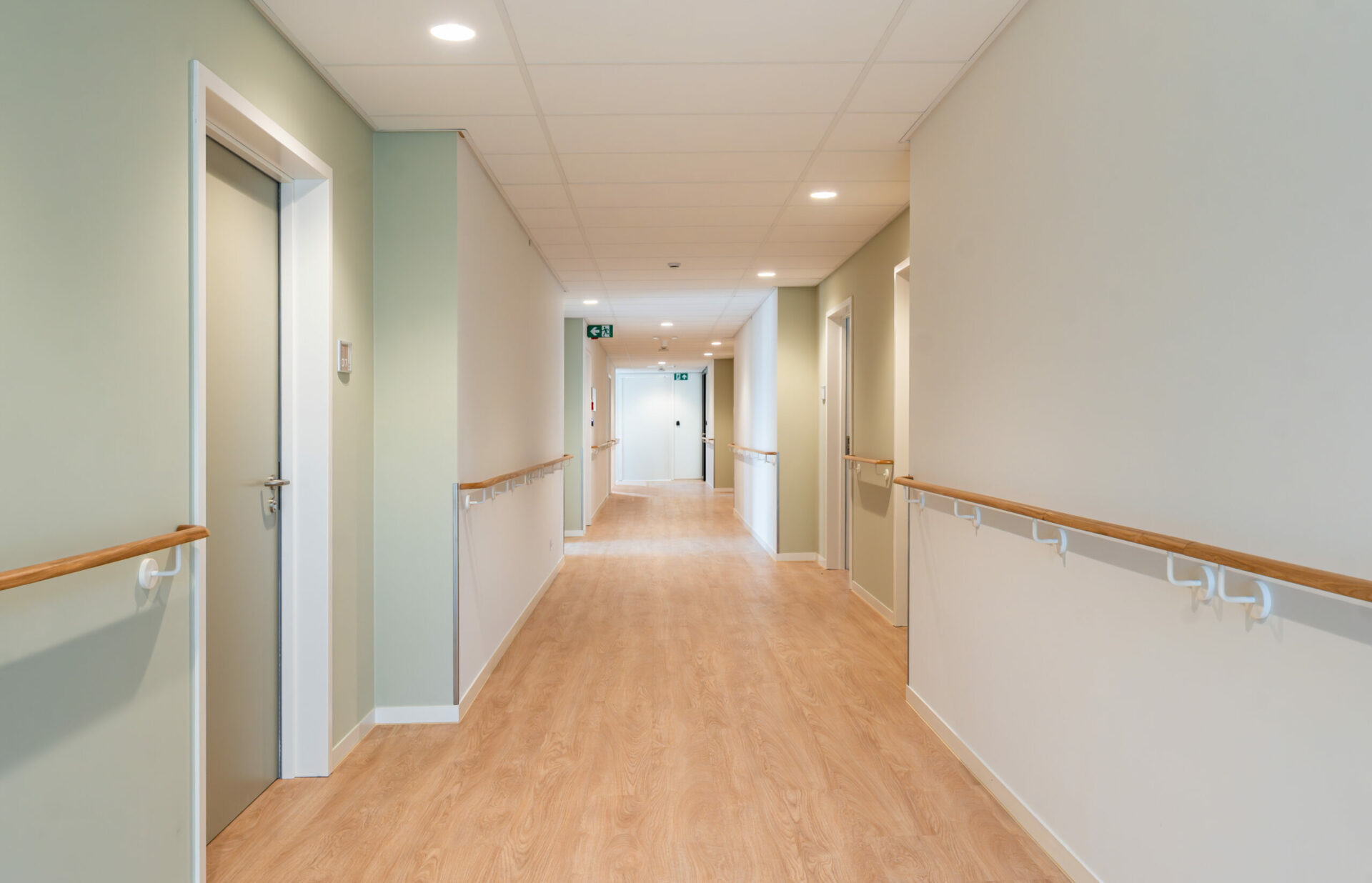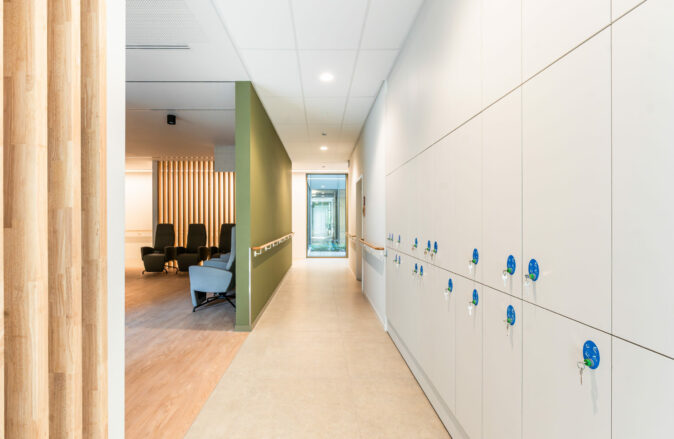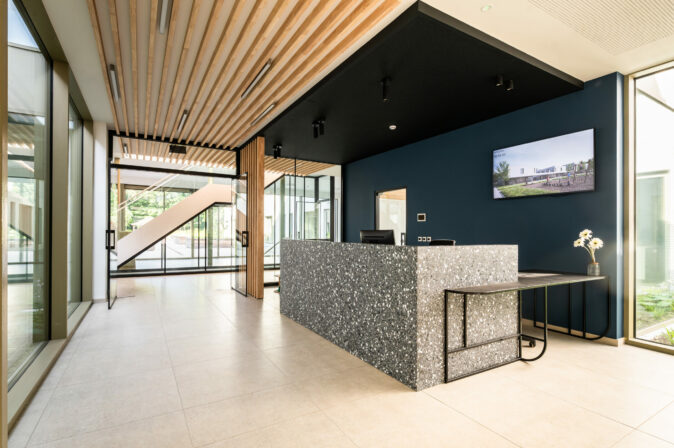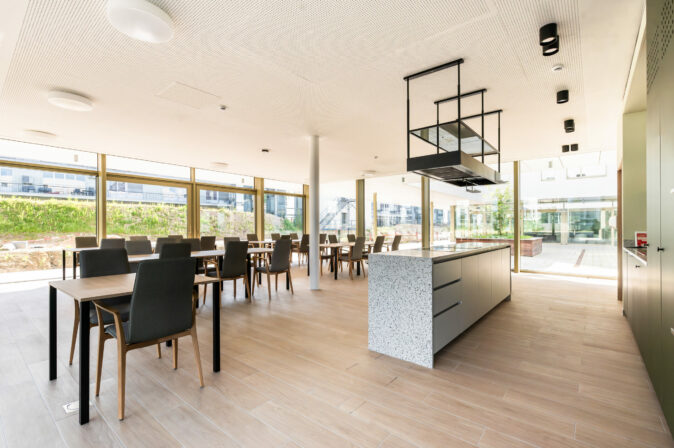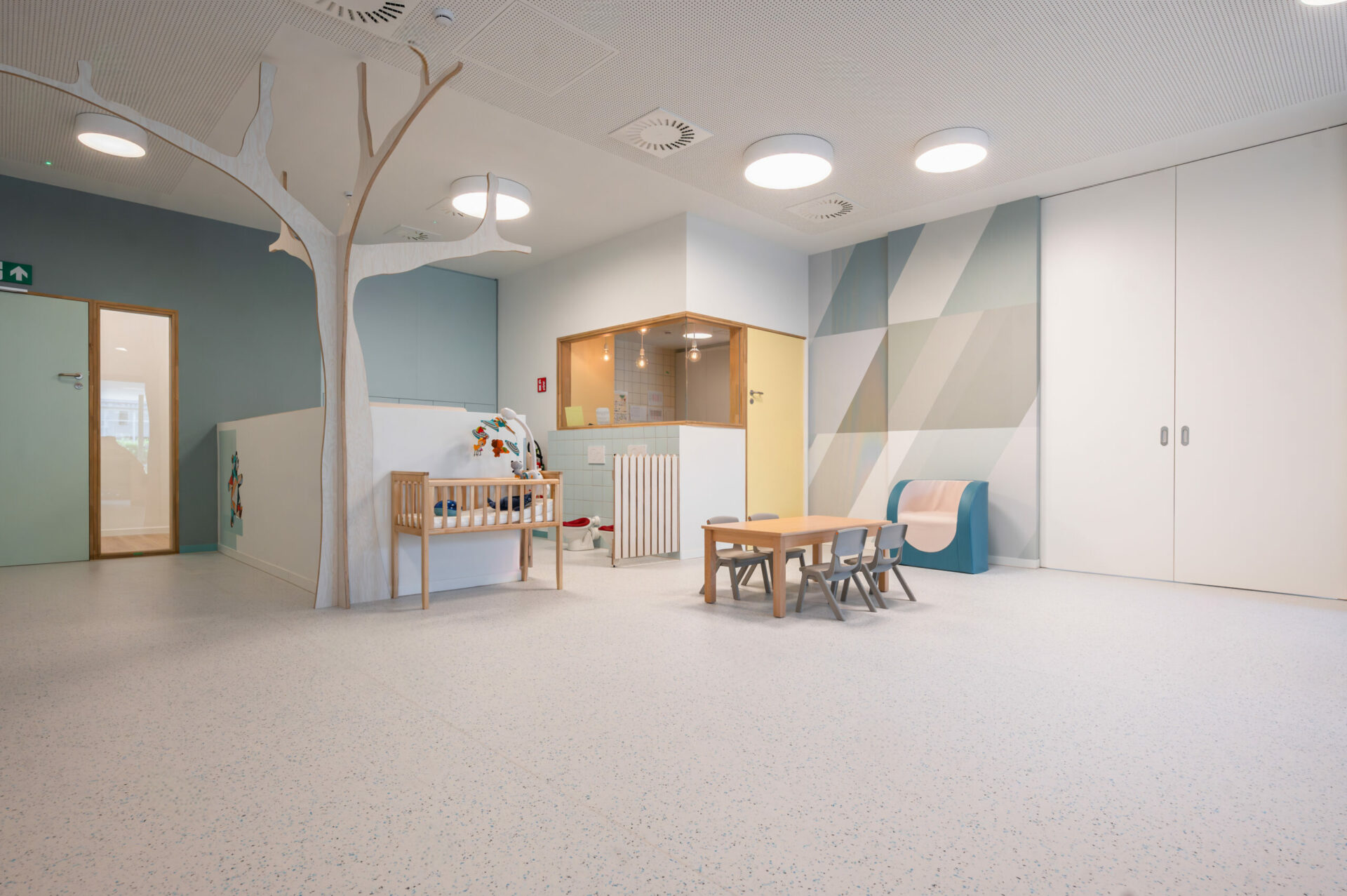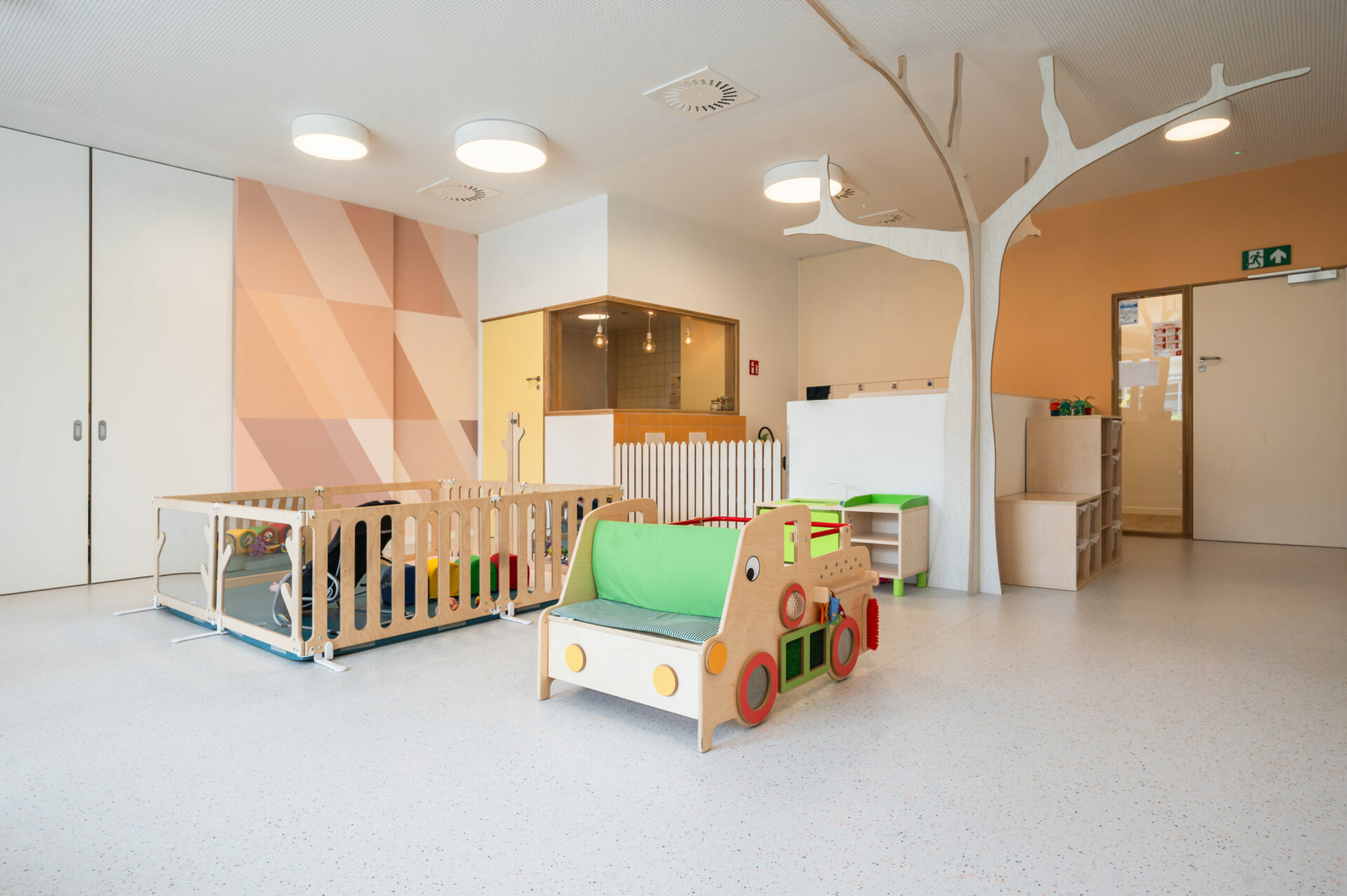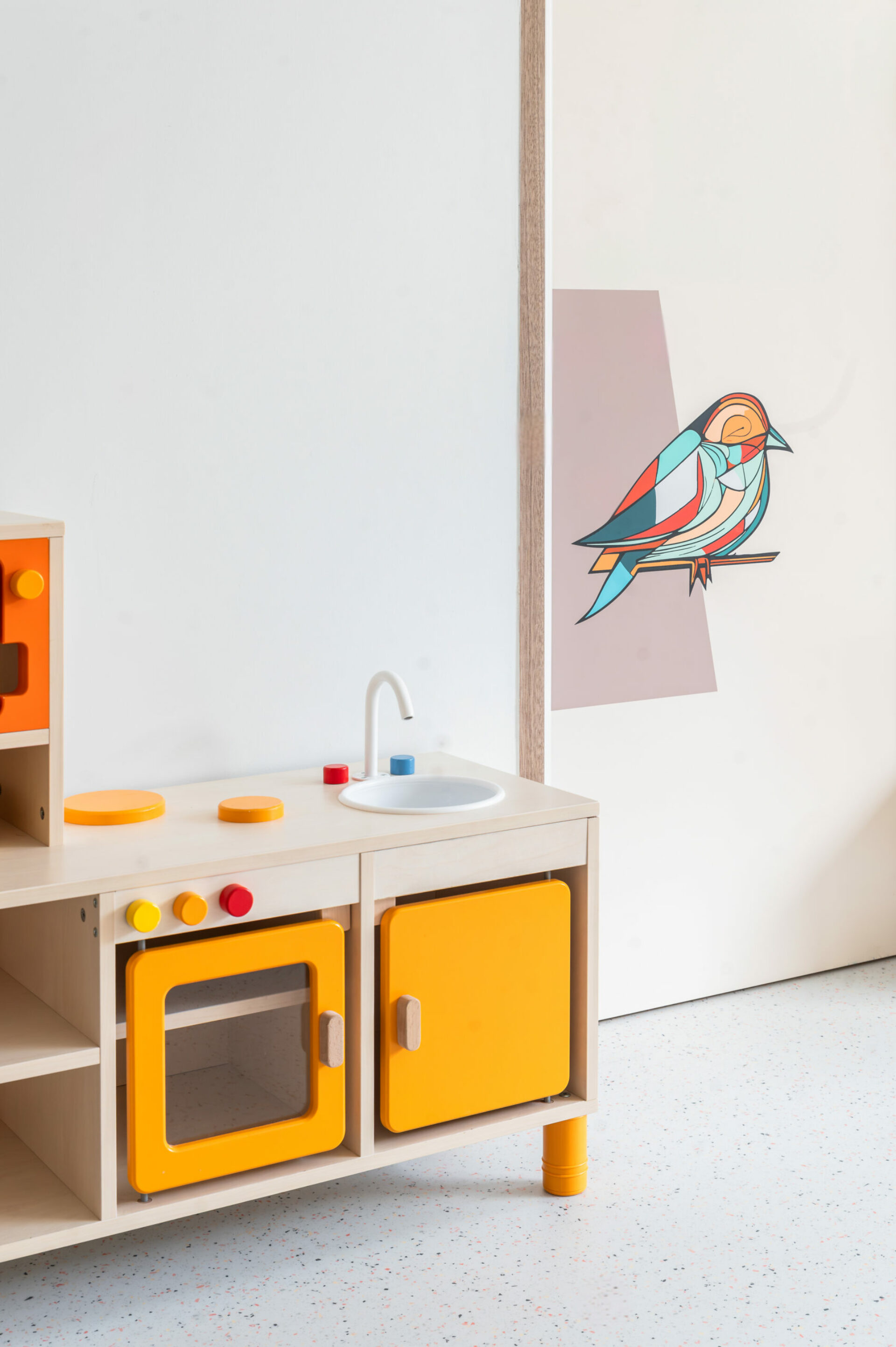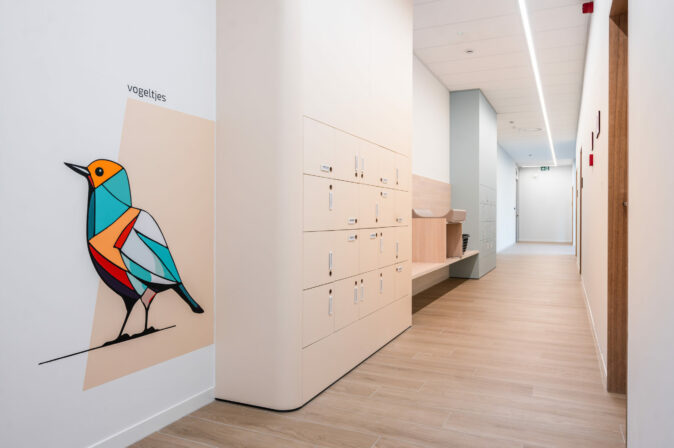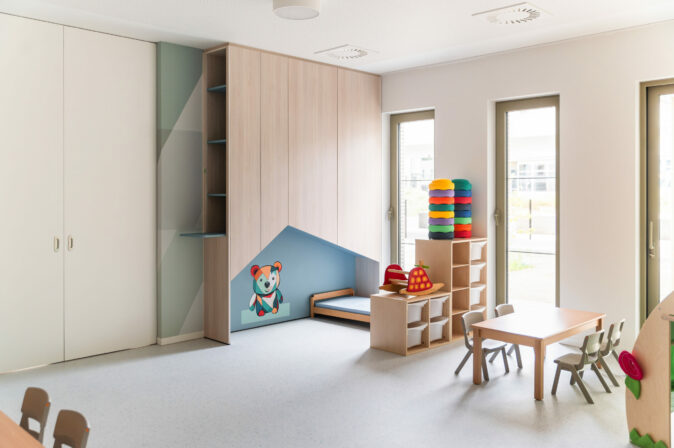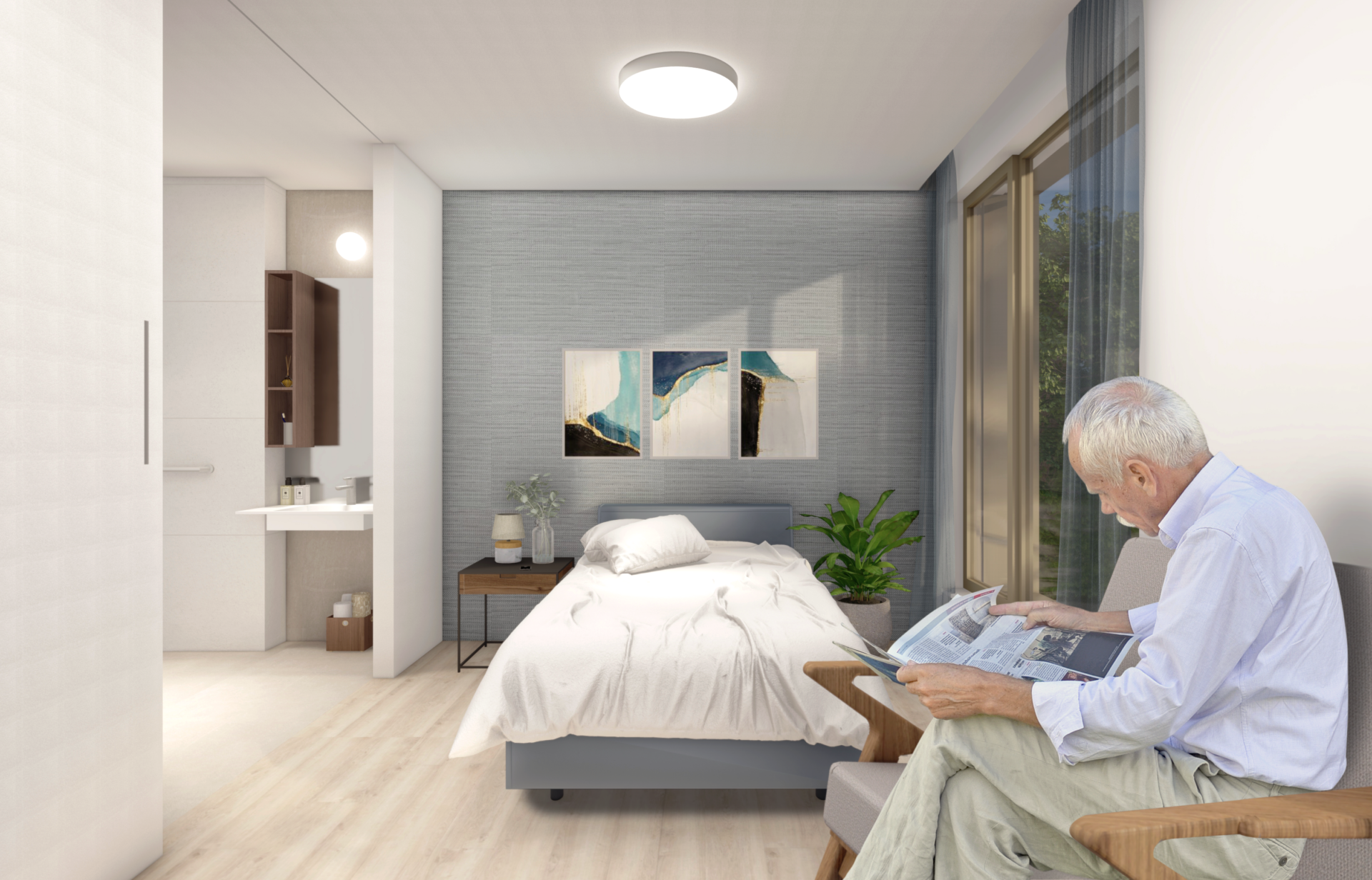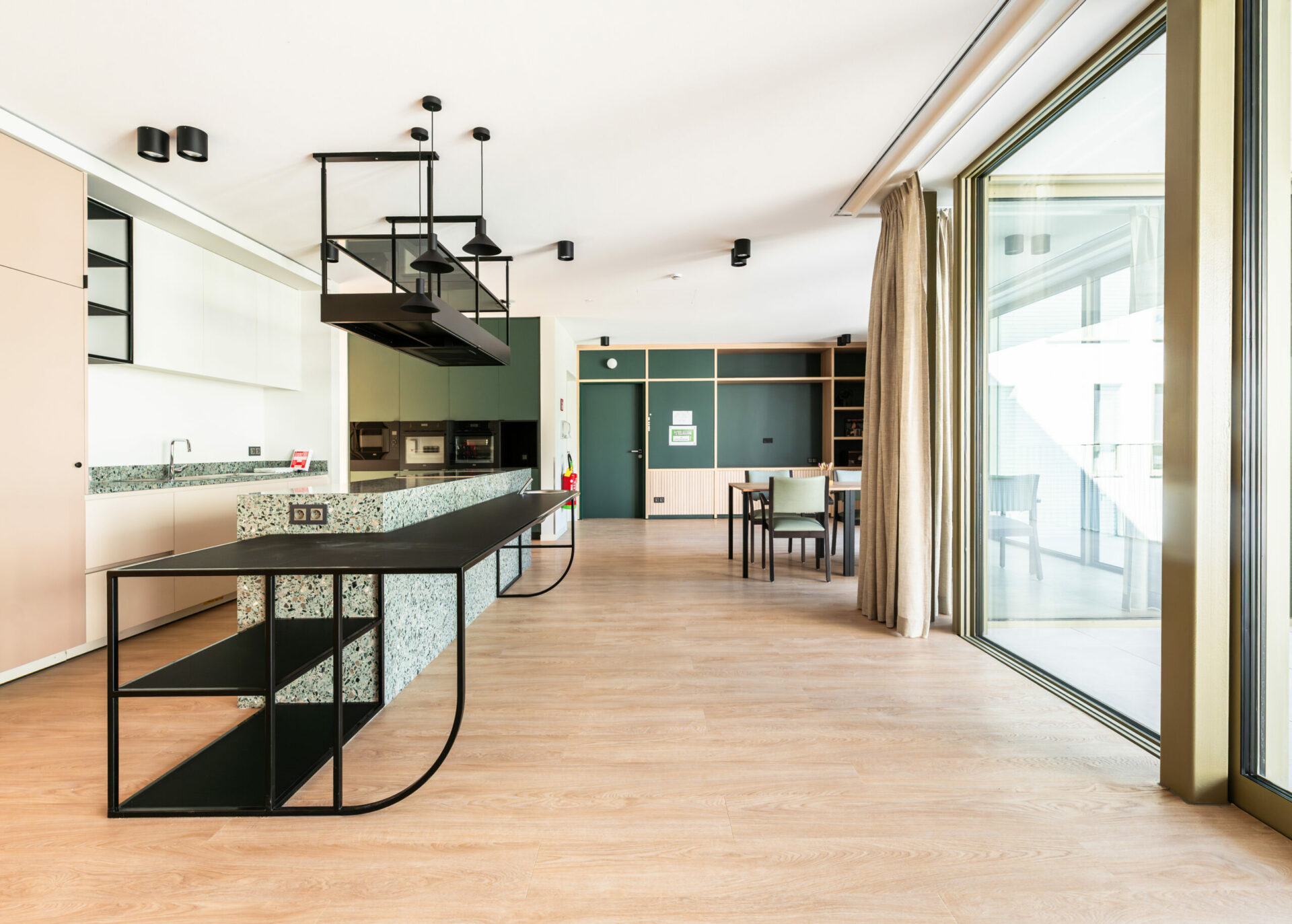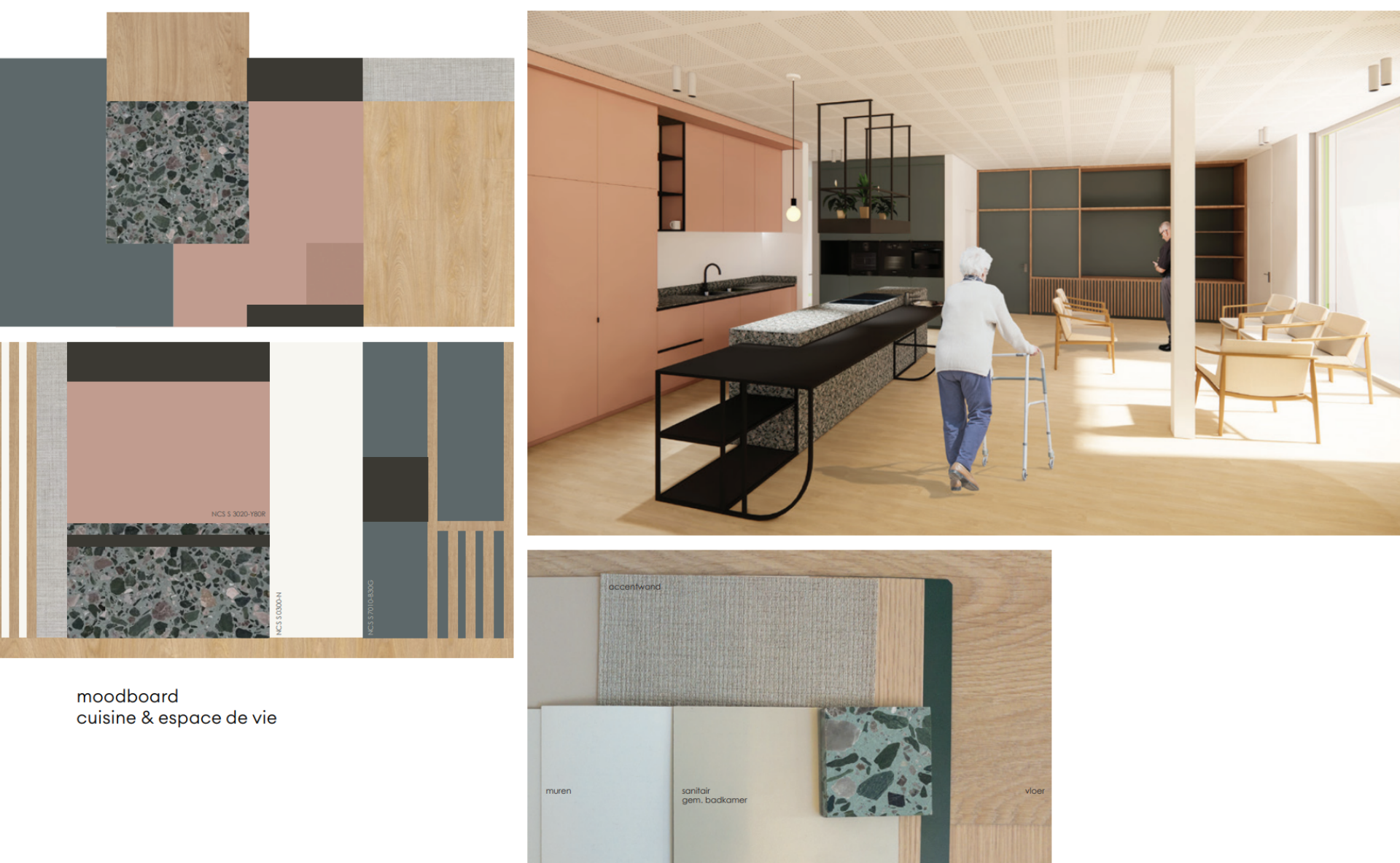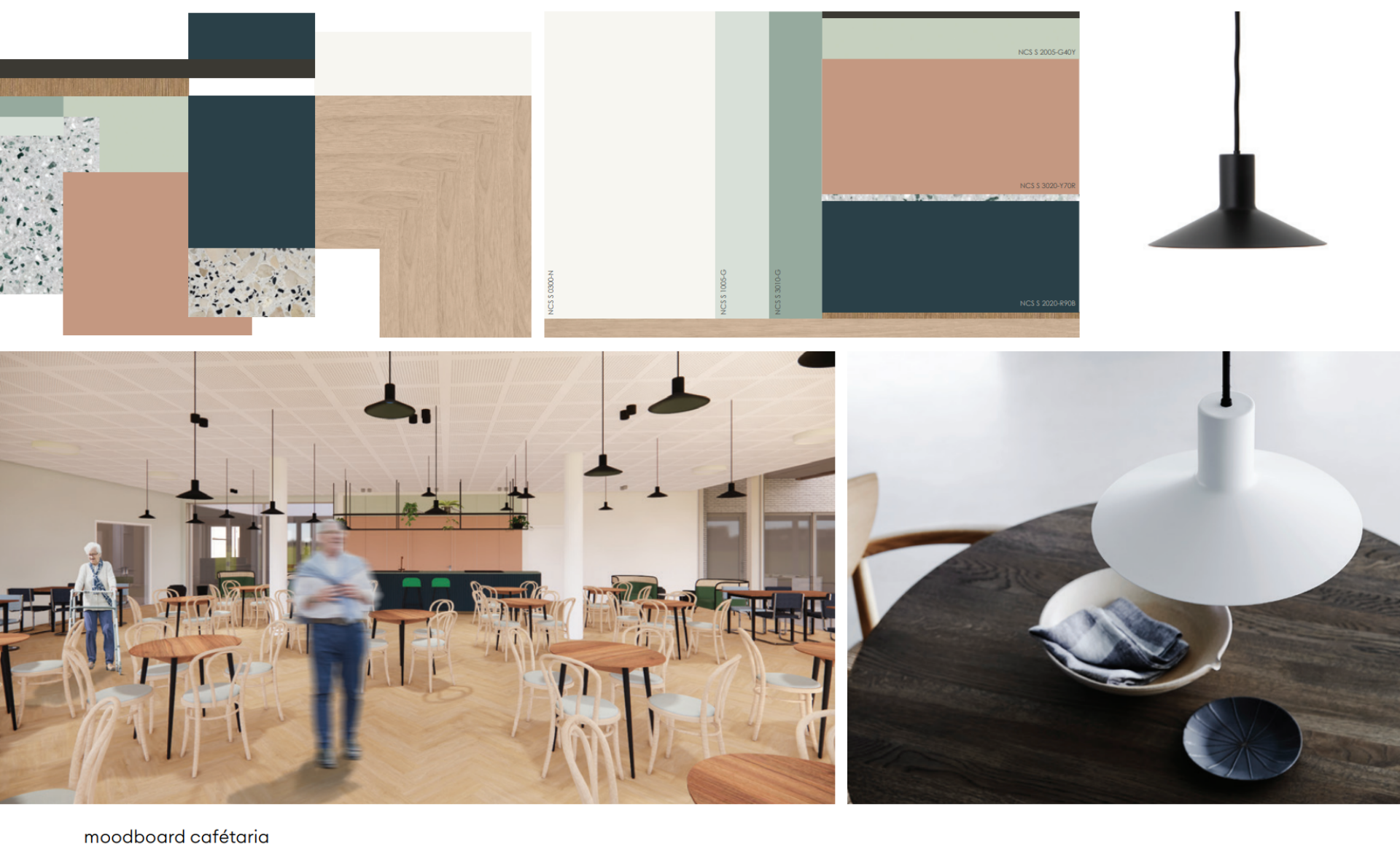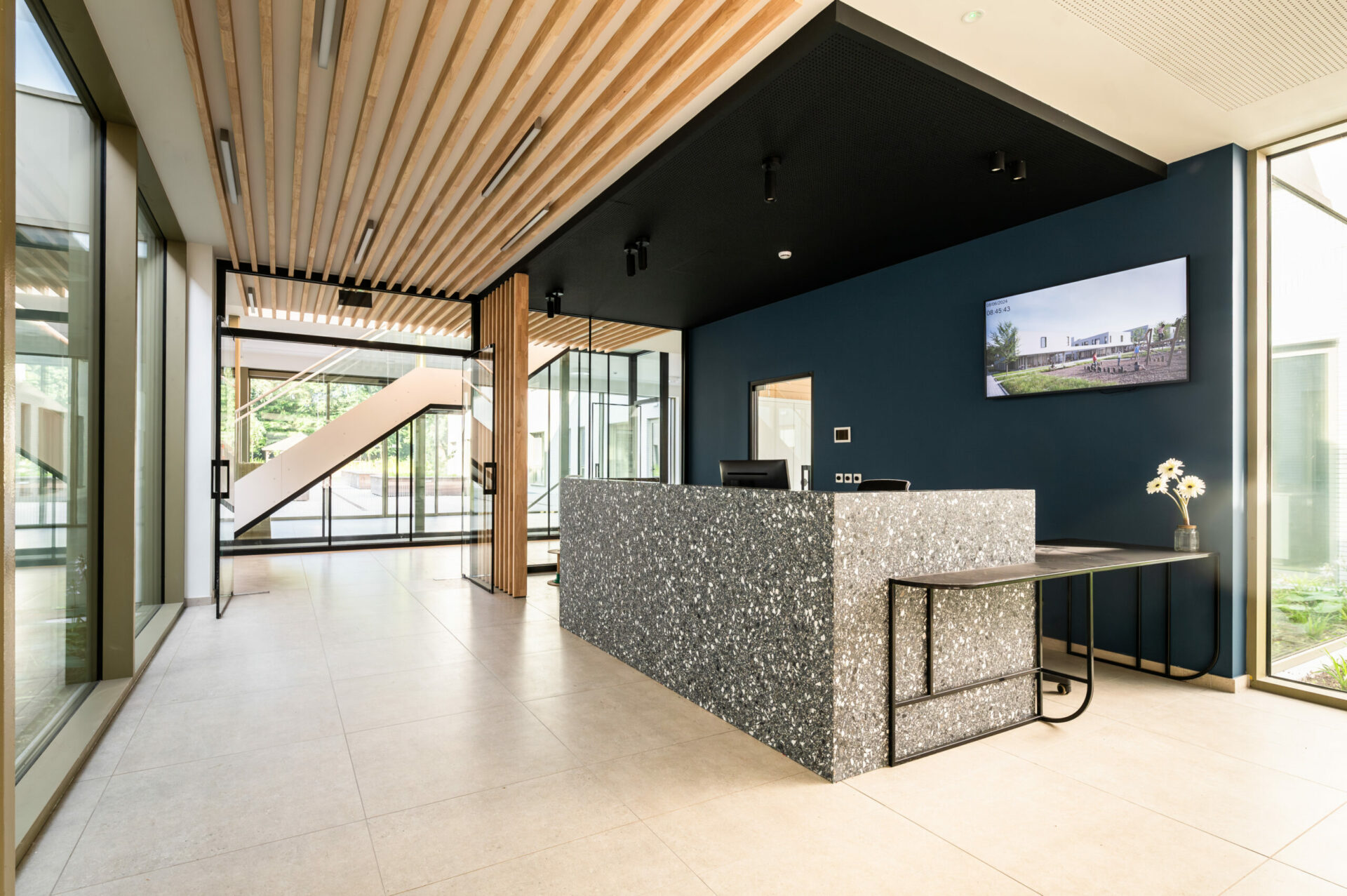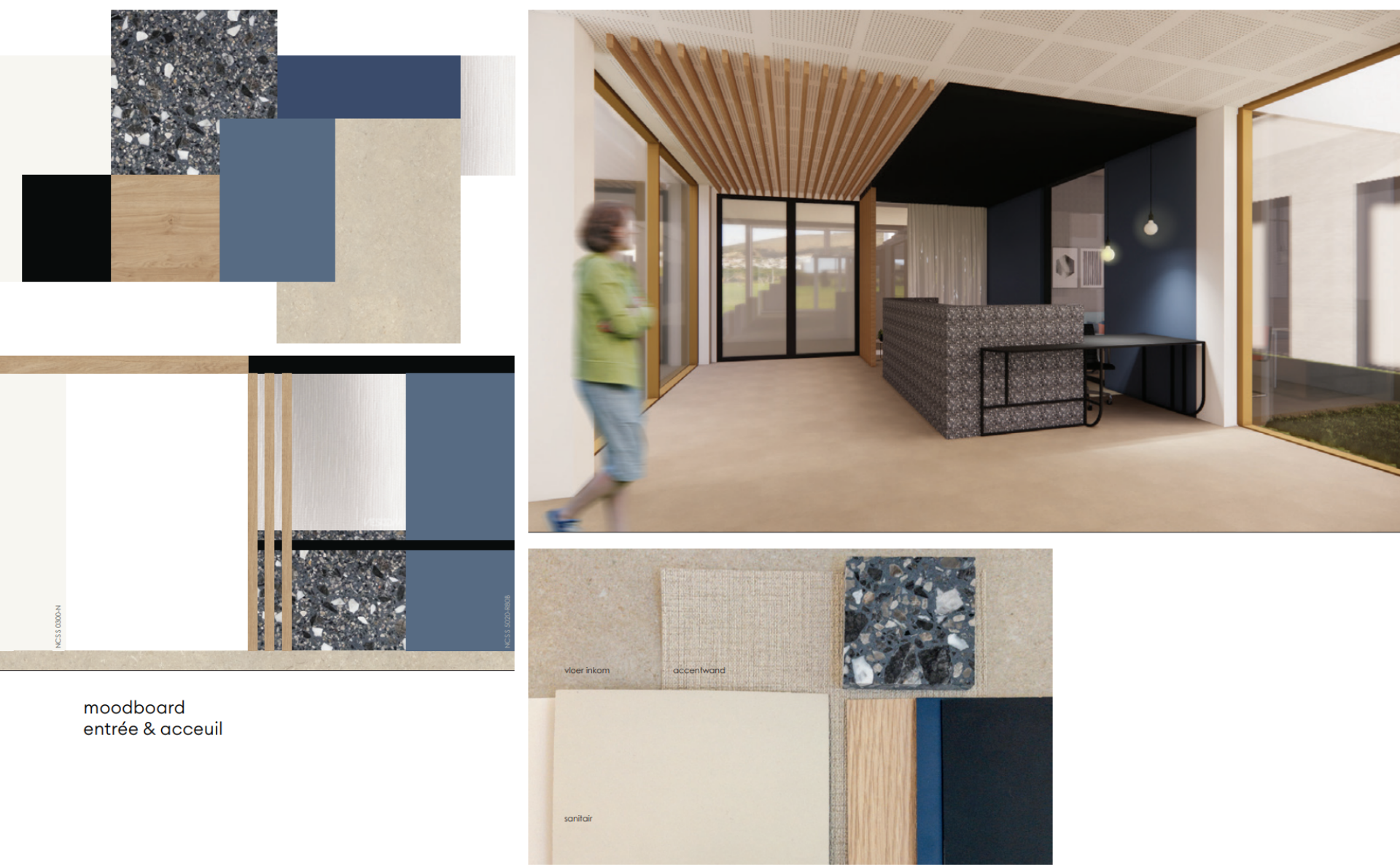program
The ‘t Huis project in Courtrai includes the development of a master plan for the entire campus and the architectural design of a new replacement building for 135 residents, a local service center, a daycare facility, and a nursery. assar also assisted the client in navigating and securing VIPA subsidies.
concept
The main entrance is centrally located along the promenade, providing access to the central staircase and visitor elevators. The nursing home consists of eight distinct building blocks, orthogonally connected and designed to match the scale of a residential house. These housing units are positioned perpendicularly to the promenade, ensuring that all rooms are oriented east-west. The rhythmic sequence of these residential units, with open spaces between them on the scale of a large street, creates a dynamic contrast between built and open areas.
The living spaces are directly connected to these open areas, offering unobstructed views of the surroundings and ensuring transparency throughout the building. Each nursing home unit consists of two living groups, each with 16 rooms. Each living group is further divided into two houses of 8 rooms, a concept clearly reflected in the architectural design. From the exterior, the structure conveys a sense of small scale and homeliness.
Functionally, the design prioritizes a welcoming and homely atmosphere. There is no central kitchen; instead, each living unit has its own kitchen where daily meals are prepared. The residential units also feature a shared living room, a TV lounge, and a reading corner.
Each care unit follows an H-shaped floor plan. The horizontal bar of the H accommodates semi-public functions and services, including the nursing station, day and dining rooms, wellness areas, kitchen, and storage spaces. At both intersections of the H, the volume is punctuated by two patios that serve as orientation points and landmarks, bringing in natural light and ventilation. These visual connections foster social interaction and a sense of oversight among residents, staff, and visitors, while also providing spatial references for residents.
